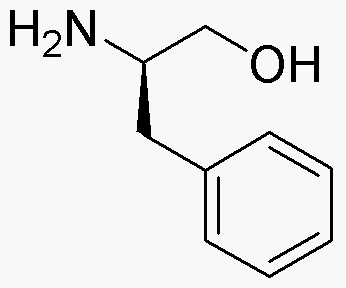D-Phenylalaninol is widely utilized in research focused on
- Pharmaceutical Development: This compound serves as a key intermediate in the synthesis of various pharmaceuticals, particularly in the development of drugs targeting neurological disorders.
- Chiral Catalysts: D-Phenylalaninol is employed in asymmetric synthesis as a chiral catalyst, enabling the production of enantiomerically pure compounds, which is crucial in the pharmaceutical industry.
- Biochemical Research: It is used in studies involving amino acid metabolism and protein synthesis, providing insights into cellular functions and disease mechanisms.
- Flavor and Fragrance Industry: The compound is also utilized in the formulation of flavors and fragrances, enhancing the sensory properties of various consumer products.
- Cosmetic Applications: D-Phenylalaninol finds its way into cosmetic formulations, where it acts as a moisturizing agent, improving skin hydration and texture.
General Information
Properties
Safety and Regulations
Applications
D-Phenylalaninol is widely utilized in research focused on
- Pharmaceutical Development: This compound serves as a key intermediate in the synthesis of various pharmaceuticals, particularly in the development of drugs targeting neurological disorders.
- Chiral Catalysts: D-Phenylalaninol is employed in asymmetric synthesis as a chiral catalyst, enabling the production of enantiomerically pure compounds, which is crucial in the pharmaceutical industry.
- Biochemical Research: It is used in studies involving amino acid metabolism and protein synthesis, providing insights into cellular functions and disease mechanisms.
- Flavor and Fragrance Industry: The compound is also utilized in the formulation of flavors and fragrances, enhancing the sensory properties of various consumer products.
- Cosmetic Applications: D-Phenylalaninol finds its way into cosmetic formulations, where it acts as a moisturizing agent, improving skin hydration and texture.
Documents
Safety Data Sheets (SDS)
The SDS provides comprehensive safety information on handling, storage, and disposal of the product.
Product Specification (PS)
The PS provides a comprehensive breakdown of the product’s properties, including chemical composition, physical state, purity, and storage requirements. It also details acceptable quality ranges and the product's intended applications.
Certificates of Analysis (COA)
Search for Certificates of Analysis (COA) by entering the products Lot Number. Lot and Batch Numbers can be found on a product’s label following the words ‘Lot’ or ‘Batch’.
*Catalog Number
*Lot Number
Certificates Of Origin (COO)
This COO confirms the country where the product was manufactured, and also details the materials and components used in it and whether it is derived from natural, synthetic, or other specific sources. This certificate may be required for customs, trade, and regulatory compliance.
*Catalog Number
*Lot Number
Safety Data Sheets (SDS)
The SDS provides comprehensive safety information on handling, storage, and disposal of the product.
DownloadProduct Specification (PS)
The PS provides a comprehensive breakdown of the product’s properties, including chemical composition, physical state, purity, and storage requirements. It also details acceptable quality ranges and the product's intended applications.
DownloadCertificates of Analysis (COA)
Search for Certificates of Analysis (COA) by entering the products Lot Number. Lot and Batch Numbers can be found on a product’s label following the words ‘Lot’ or ‘Batch’.
*Catalog Number
*Lot Number
Certificates Of Origin (COO)
This COO confirms the country where the product was manufactured, and also details the materials and components used in it and whether it is derived from natural, synthetic, or other specific sources. This certificate may be required for customs, trade, and regulatory compliance.


